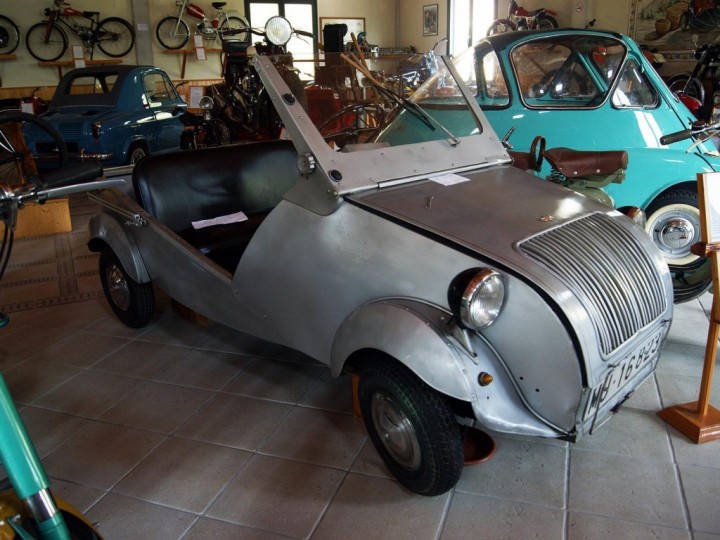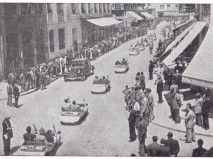1953 Biscuter M-100
The Zapatilla was minimal indeed, with no doors or windows or reverse gear. The 1 cylinder, 197 cc, two-stroke motor produced 9 horsepower (7 kW), had a crank starter, and drove only the right front wheel. Braking was by an unusual three-point system involving the transmission and cable ties to the two rear wheels. One genuinely advanced feature was an all-aluminum body, although steel was later used.













